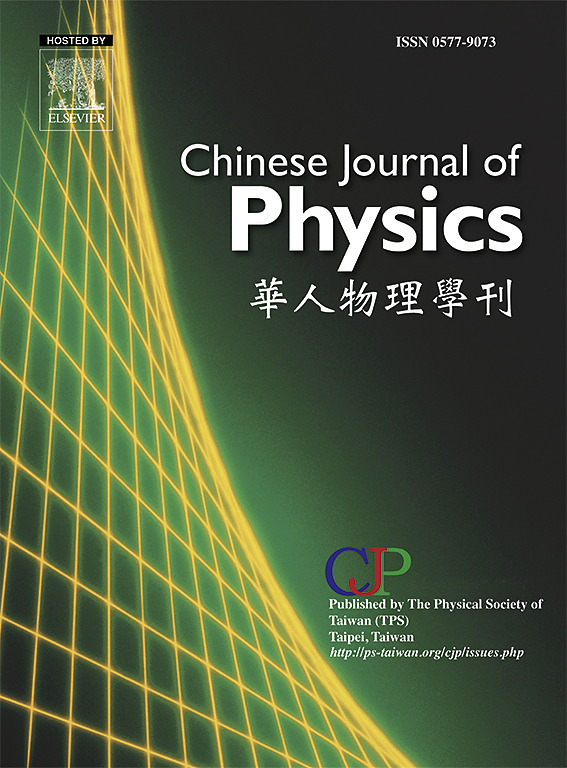边缘计算用动态niox记忆电阻器
IF 4.6
2区 物理与天体物理
Q1 PHYSICS, MULTIDISCIPLINARY
引用次数: 0
摘要
电阻式随机存取存储器(RRAM)设备利用电阻状态调制进行数据存储和检索,由于其高速性能、低能耗和卓越的可扩展性而获得了相当大的兴趣。这些先进的特性使得RRAM设备非常适合神经形态计算,这是一种快速兴起的范例,旨在开发能够实时学习、适应和环境交互的自主系统。在神经形态体系结构中,RRAM越来越被视为内存中计算的一个有前途的候选者。本研究基于ITO/NiOX/ n++ Si堆叠RRAM器件的不同电阻状态,通过直流扫描和电脉冲微调电导来研究神经形态系统的实现。对神经形态功能至关重要的关键特性,包括Spike amplitude dependent Plasticity (SADP), Spike Number-Dependent Plasticity (SNDP), Spike Duration-Dependent Plasticity (SDDP)进行了系统的研究。增强和抑制动态,以及RRAM装置所显示的长期可塑性特征,强调了其在神经形态学应用中的巨大潜力。演示的多状态操作能力突出了该设备在高效数据处理和存储方面的潜力,这对于先进的边缘计算架构至关重要。本文章由计算机程序翻译,如有差异,请以英文原文为准。

Dynamic NiOx-based memristors for edge computing
Resistive random-access memory (RRAM) devices, which leverage resistance state modulation for data storage and retrieval, have garnered considerable interest due to their high-speed performance, low energy consumption, and exceptional scalability. These advanced characteristics make RRAM devices highly suitable for neuromorphic computing, a rapidly emerging paradigm aimed at developing autonomous systems capable of real-time learning, adaptation, and environmental interaction. In neuromorphic architecture, RRAM is increasingly viewed as a promising candidate for computing-in-memory. This research investigates the realization of neuromorphic systems by fine-tuning conductance using the DC sweep and electrical pulse on ITO/NiOX/n+ + Si stacked RRAM devices, based on their distinct resistance states. Key properties crucial for neuromorphic functionality, including Spike Amplitude-Dependent Plasticity (SADP), Spike Number-Dependent Plasticity (SNDP), Spike Duration-Dependent Plasticity (SDDP), were systematically examined. The potentiation and depression dynamics, along with the long-term plasticity characteristics demonstrated by the RRAM device, underscore its promising potential for neuromorphic applications. The demonstrated multi-state operational capability highlights the potential of the device for high-efficiency data processing and storage, which are essential for advanced edge computing architectures.
求助全文
通过发布文献求助,成功后即可免费获取论文全文。
去求助
来源期刊

Chinese Journal of Physics
物理-物理:综合
CiteScore
8.50
自引率
10.00%
发文量
361
审稿时长
44 days
期刊介绍:
The Chinese Journal of Physics publishes important advances in various branches in physics, including statistical and biophysical physics, condensed matter physics, atomic/molecular physics, optics, particle physics and nuclear physics.
The editors welcome manuscripts on:
-General Physics: Statistical and Quantum Mechanics, etc.-
Gravitation and Astrophysics-
Elementary Particles and Fields-
Nuclear Physics-
Atomic, Molecular, and Optical Physics-
Quantum Information and Quantum Computation-
Fluid Dynamics, Nonlinear Dynamics, Chaos, and Complex Networks-
Plasma and Beam Physics-
Condensed Matter: Structure, etc.-
Condensed Matter: Electronic Properties, etc.-
Polymer, Soft Matter, Biological, and Interdisciplinary Physics.
CJP publishes regular research papers, feature articles and review papers.
 求助内容:
求助内容: 应助结果提醒方式:
应助结果提醒方式:


